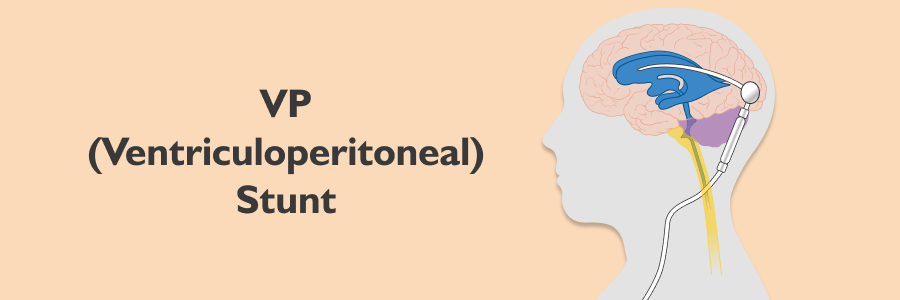
For many people, a ventriculoperitoneal (VP) shunt) is a life-changing medical device. It’s a thin tube that drains excess cerebrospinal fluid (CSF) from the brain to another part of the body, most often the abdomen. This simple yet ingenious device helps manage hydrocephalus, a condition in which fluid accumulates in the brain.
With a VP shunt, living a full and active life, including travelling, is not only possible but encouraged. Of course, the thought of a trip can feel overwhelming, especially when you live with a medical condition. But with the right preparation, you can enjoy your journeys safely and stress-free.
This guide will walk you through what a VP shunt does, pre-travel steps, smart packing tips, and essential safety measures to ensure a smooth and confident travel experience.
Understanding the Basics: What a VP Shunt Does
Before packing your bags, it helps to understand how your VP shunt works and what might affect it. A VP shunt has three main parts:
- Catheter: Placed in the brain to collect excess fluid.
- Valve: Controls how much fluid drains and how quickly. Some valves are programmable and can be adjusted by your doctor with a special magnet.
- Flexible tube: Runs under the skin, usually from the head to the abdomen, where the fluid is absorbed.
The most common issues with a shunt are blockage, infection, or a change in valve setting. Knowing these basics will help you recognise symptoms if something goes wrong during your travels.
Dr. Vikas Gupta explains, “A VP shunt is like a safety valve for the brain. By redirecting excess fluid, it protects patients from dangerous pressure build-up and allows them to live a normal, active life, including travelling.”
Pre-Travel Essentials: Your Go-To Checklist
Preparation is the foundation of safe travel with a VP shunt. Here’s what to do before your trip:
1. Talk to Your Doctor
Book an appointment with your neurosurgeon or neurologist. Ask:
- Confirm if it’s safe for you to fly
- Ask about specific risks related to your shunt
- Discuss VP shunt emergencies and what warning signs to watch for
- Request a doctor’s letter explaining your condition
Dr. Gupta advises, “Before travelling, the most important step is a consultation with your neurosurgeon. Every patient’s condition is unique, and a short pre-travel check-up can give you the confidence and safety clearance you need.”
2. Gather Your Medical Documents
Carry both physical and digital copies of:
- Doctor’s letter (diagnosis + shunt details)
- Shunt ID card from the manufacturer
- Recent scans (CT/MRI) showing your baseline
- Medication list with names, dosages, and reasons
3. Research Your Destination
- Locate hospitals with neurosurgeons experienced in VP shunt care
- Check local rules for carrying medications
4. Get the Right Travel Insurance
Choose a policy that covers pre-existing conditions and emergencies related to hydrocephalus.
What to Pack: Beyond the Basics
Packing smart ensures peace of mind while travelling with a VP shunt.
- Medical pouch: Carry documents, scans, and emergency contacts in your hand luggage.
- Medical alert ID: A bracelet or necklace that states you have a VP shunt.
- Medications: Pack enough for the entire trip, plus extra for delays. Keep them in original containers.
- Comfort items: Travel pillow, eye mask, earplugs, especially helpful if you’re prone to headaches.
- First-aid kit: For small cuts or scrapes, especially near shunt sites.
Dr. Vikas Gupta adds, “I always tell my patients, keep your shunt ID card and recent scans in your hand luggage, not checked baggage. In an emergency abroad, these documents can help doctors make the right decision quickly.”
Safety Tips for Your Journey
1. Flying with a VP Shunt
- Airport security: If you have a programmable valve, inform staff before scanning. Most scanners are safe, but handheld wands with magnets may affect settings. Keep your shunt ID card ready.
- Altitude changes: Some people may feel headaches or pressure changes during takeoff and landing. Chewing gum or yawning helps.
A patient of Dr. Vikas Gupta shared, “After my shunt was placed, I was so worried about flying. But Dr. Vikas explained everything, and I got a travel insurance policy that covered my hydrocephalus. I flew to Thailand, and I encountered no issues. Knowing I was prepared and had a plan for emergencies gave me the confidence to enjoy every minute of my trip.”
2. Listen to Your Body
- Rest often: Don’t overexert yourself; build downtime into your schedule.
- Stay hydrated: Drink plenty of water to avoid fatigue and headaches.
3. Watch for Warning Signs
Be alert for possible signs of shunt malfunction:
- Headaches
- Nausea or vomiting
- Fatigue or unusual sleepiness
- Blurred vision
If symptoms appear, seek medical help immediately at the nearest hospital.
The Freedom to Explore
Travelling with a VP shunt may need extra planning, but it should never hold you back. With the right preparation, doctor consultation, smart packing, travel insurance, and listening to your body, you can explore the world with confidence.
Remember, your VP shunt is here to support you, not stop you. With a little planning, you can travel with the same excitement and joy as anyone else.
FAQs on VP Shunt Care
1. Does a VP shunt set off metal detectors at airports?
Most VP shunts don’t trigger alarms, but carry your shunt ID card to explain if security staff ask questions.
2. How far should I keep my phone from the shunt valve site?
Keep your phone at least 2–6 inches (5–15 cm) away from the shunt valve site.
3. Which ear should I hold the phone to?
Use the ear opposite to the side of your shunt valve to minimize magnetic field interference.
4. Why is distance important?
Programmable shunt valves can be affected by the magnetic fields generated by electronic devices, which may unintentionally alter the valve’s pressure settings.
5. What about other electronic devices?
Keep any device with strong magnets, such as some smartphones, wireless chargers, or magnetic cases, at a safe distance from your shunt valve implant site.
Explore more blogs: VP Shunt Surgery: Causes, Procedure, Recovery & Risks
